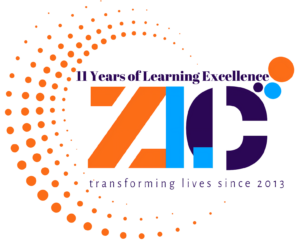Before we look for solutions for pre-existing issues, the problem itself has to be identified. Before we ask how we have to ask ‘why’. Address what has gone wrong. So no L&D program can start without effective competency mapping.
To identify training needs, the knowledge gap has to be identified first. Your annual sales turnover has dropped whereas the employee attrition rate has hit the roof. Why?
In many cases employee turnover is caused by lack of career opportunities but often there are other factors like continuous poor performance, unmatched hiring, and stratospheric training costs that can lead to loss of employees. So before any training program can start, the management needs to investigate if there are any competency gaps.
What is competency?
According to the University of Nebraska-Lincoln, competency is defined as ‘’the combination of observable and measurable knowledge, skills, abilities and personal attributes that contribute to enhanced employee performance and ultimately result in organizational success.
HR duties usually involve competency mapping but in most cases, they run into challenges like being too dated or focusing too much on certain skills such as leadership or technical knowledge. As the market evolves, many etch innovation is introduced competencies also change with time.
Competency mapping starts with categorizing competencies or skills:
Core knowledge:
Employees are expected to be well versed in industry-specific knowledge. For example, an IT worker should have functional knowledge in coding, cloud computing, networking skills such as IP setup, cyber security, etc. In addition to that basic knowledge about the regulations in the industry and a good grasp of the company’s culture and values is also a must.
Technical skills
These are the ‘hard skills’ or job-specific skills which an employee would need to function daily. For example, a digital marketing manager will need to have a good grasp of LinkedIn marketing, Google analytics, etc. For data scientists, it might be data visualization, modeling, and Python.
Communication skills
These include presentation skills, teamwork abilities, conflict management competency, as well as leadership skills.
After the core skills have been defined, it’s time to set up levels of knowledge. Competency levels can be categorized into 4 levels:
- Expert: Can function as a specialist or authority in this particular skill
- Proficient – Demonstrates this competency independent of supervision
- Advanced Beginner – Can exhibit competency under the guidance
- Novice – Is not familiar with the skill
How can Competency Mapping come in handy?
Makes recruitment easier
A periodic definition of core competency can really make things easier when it’s hiring season. It helps to have an objective scale to decide who to hire and who to pass over.
A Necessary Precursor to Training
As we said before no best laid L&D program can start without competency mapping. What competency mapping does is expose knowledge gaps. It gives management a clear vision as to what skills they should focus on. Structuring learning workshops/classes around your core competencies will lead to greater ROI or return on investment as well.
Set the benchmark for Appraisals, promotions
We always want to ensure that the best get its due. Competency mapping will help employers discover who the ‘best’ employees of the organization are. So when it comes to making promotions the management can ensure that such appraisal decisions are 100% objective and based on merit.
Makes Organizational Culture Meritocratic
If promotions are made on proficiency level then the work culture automatically becomes more meritocratic and transparent. Employees can be assured that no unfair bias was made by the management.

